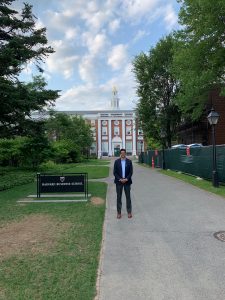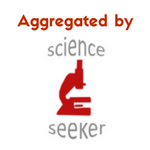Matthew Mistry is a Market and Equity Analyst at CCRM, where he conducts investment diligence, market analyses, participates in company creation activities and supports strategic business development. He joined CCRM from the Ontario Bioscience Innovation Organization (OBIO) where he was involved in supporting health science companies gain access to private and public capital, providing strategic business advice, investor readiness coaching, and pitch review and evaluation of high potential health science technologies in the province of Ontario. He has also worked at the Hospital for Sick Children where he was involved with the patenting of a cancer diagnostic biomarker. Matthew also worked for GeneYouIn, a digital health/health IT company offering personalized genetic testing and disease-risk assessments for clients. He received his Master’s of Science from the University of Toronto studying the genetic etiology of childhood brain cancer and before that obtained a BSc (Honours Biology) from McMaster University.

Dr. George Daley, Dean of the Faculty of Medicine at Harvard Medical School, at the opening reception (photo courtesy of the author)
This past July, Harvard Business School was centre stage for the 12th annual Business of Regenerative Medicine conference. The event, hosted by the Harvard Stem Cell Institute, fostered timely discussions on advancements in the field of regenerative medicine. Venture capitalists, entrepreneurs, ecosystem advocates and enablers and leaders from the field descended on Boston to share important scientific updates and reaffirm their commitment to advanced therapies, despite many challenges facing the field. Several stand-out presentations from the jam-packed two-day program are described below.
Don’t be afraid to kill your project
The theme of this year’s conference, Defining and Creating Value, was introduced and discussed by Mark Fishman, previously an executive at Novartis and a Professor at Harvard’s Department of Stem Cell and Regenerative Biology. Dr. Fishman explained that what we value and how we measure it are very different between academia and business. He emphasized “you get what you measure in business,” and that academia needs to master the transition between discovery to endgame using Gantt chart driven processes. Killing projects is hard in both academia and business, due to the inherent self-interest of the individuals leading those projects, but a necessity for advancing quality therapies.
Investing in talent to scale your company
Sarah Larson is an HR executive at Third Rock Ventures, a venture capital firm that invests at the Series A stage. It has 53 portfolio companies that have produced nine approved products. Ms. Larson offered compelling insight into how companies should be thinking to invest in the new generation of talent. First, she helped the audience understand the subtle difference between “growth” and “scaling:”
Growth means adding resources at the same rate that you’re adding revenue. For example, a company that gains a customer hires more people to service that customer, and adds revenue at the same rate it is adding more cost.
Scale is adding revenue at a rapid rate while adding resources at an incremental rate. Google and SalesForce are good examples. Scaling profitably is the hardest thing to do.
A recent report from Bain & Company’s, titled “Founders Mentality,” shows that problems with scaling are largely internal, not external. Ms. Larson made the point that leaders need to work on their companies, rather than working in them.
Some insightful trends on talent, derived from a 2019 Global Human Capital Report by Deloitte, include the following:
- By 2020, the number of self-employed workers in the U.S. is expected to triple to 42 million;
- Flexible lifestyle is key; and,
- Emphasis on employee well-being rather than wellness. The new paradigm is life first, then adjust work as necessary.
Ms. Larson also gave some concrete examples of how leaders can retain their talent:
- Define culture in terms of clear, observable behaviours. Define each company value or belief into behaviours that people can observe. Respect can be defined as being a great listener and giving equal consideration to different ideas.
- Many performance management systems are retrospective, which is a big problem. They need to be prospective. She firmly believes annual performance reviews kill companies. Instead, managers need to be giving employees continuous, ongoing feedback.
- Try new incentive programs for the new generation, such as paying a portion of student loans after being at the company for one year.
Reimbursement challenges facing the field
The issue of reimbursement came up in many presentations and panels. Key takeaways were that different payers are going to have different willingness to pay. There are multiple payers in the U.S. health-care system and, as such, some insurers will cover expensive advanced therapies while others will not, leading to larger inequality to access these medicines. An example of this is the recent new approval for a gene therapy treating Spinal Muscular Atrophy, which is indicated for patients up to 2 years of age despite little evidence of efficacy post 6 months. As such, some insurance companies are only covering up to 6 months despite the approval being up to 2 years of age. This has led to a lot of confusion for private insurers and the industry as a whole.
The issue of how value will be created for the long-term was raised. Blockchain would help our sector in terms of challenges of long-term reimbursement. Patient medical records could follow them for their life, which insurance companies could use to monitor and assess outcomes and the long-term quality of these therapies. Payers want to see something transformational, just like VCs, patients and doctors. While these therapies have potential curative effects, the development of other diseases (co-morbidities) will increase. Look at Alzheimer’s: If cured, there would still be other co-morbidities for the 90-100 age group. Generally, the mindset of the private insurance industry is cost avoidance and that is largely responsible for the reimbursement difficulties we face today.
Leaders are made, not born
Nancy F. Koehn, distinguished Harvard Professor and Historian, gave one of the most memorable talks of the entire conference, partly due to how different the talk was from everything else that was discussed, but also because of her exceptional storytelling abilities.
Dr. Koehn made an impassioned argument that leaders are made not born, often out of crisis, and that these leaders are made through small intentional steps, rather than executing some master grand plan. She explained that courageous leaders are individuals who help us overcome the limitations of our own weaknesses, selfishness, laziness and fears, and get us to do harder, better things that we won’t do on our own (quote paraphrased from David Foster Wallace, 2000).
Through the storytelling of Ernest Shackleton’s trip to Antarctica, Dr. Koehn named four essential elements that make a leader:
- Nature and nurture (endowments and experiences)
- An individual’s ability to see the big picture
- A moment arises that the individual recognizes demands their leadership
- A person’s choice to get in the game
Often, early encounters with failure or disappointment are important in future leaders, as well as using setbacks and triumphs to motivate yourself to get better. Leaders, on a daily basis, need to take time away from the many distractions of the world (i.e. smartphones) to reflect and calculate next steps, and the steps after that.
Exosomes…the way of the future?
Steven Stice, co-founder and CSO of ArunA Biomedical, described his company’s approach in using neural exosomes for the treatment of neurodegenerative diseases. The company has developed a neural exosome platform that can load and deliver antibiotics and siRNAs (a class of double-stranded RNA molecules) to the central nervous system (CNS) (exosomes naturally cross the blood-brain-barrier). These exosomes can be used to reduce inflammation and restore function of diseased cells. The company has a pipeline of products focused on Parkinson’s, ALS and Huntington’s disease. Dr. Stice showed data that exosomes take on the characteristics of the cell type they’re coming from. Proteins on exosomes enable BBB crossing and specificity to neural cells. In rats that suffered strokes, treatment with exosomes from neural stem cells showed improved walking ability – the gold standard for CNS disease functional recovery. Lots more research and data are required to understand the therapeutic potential of exosomes, especially into other cell types whose exosomes cross the BBB, and which do it better.
The CEO Perspective
Geoffrey MacKay, CEO of AVROBIO and Entrepreneur-in-Residence at Atlas Ventures, closed out the program by describing his experiences leading his company to an initial public offering (IPO) back in 2018. However, before this, he shared the characteristics Atlas Ventures looks for when investing: great science, big innovation, an experienced team (veterans with scars, proven execution ability) that is capital efficient, has defensible intellectual property and a realistic exit path.
AVROBIO’s regulatory strategy was key to driving their speed to the market, tackling rare orphan diseases with significant unmet need. It was also critical to understand early on where the specific patient populations existed to effectively recruit for clinical trials (had to go global early!).
Strategy can drive finance, but also vice versa. He needed to view it both ways. For example, before considering an IPO, he approached investment banks to understand what amount of clinical data (e.g. number of patients) were required before going public. He had to think about what people were willing to invest in, since the company was very dependent on venture capital funds in the early stages. He understood certain areas were more investable than others. He acknowledged that business is simple, but people are complicated. As a leader, you need everyone on the team to trust, respect and collaborate with each other in an open way.

Matt Mistry at Harvard Business School

View of Harvard
That’s a wrap for BRM 2019! Keep a lookout for announcements about next year’s conference, being held at Georgia Tech!
Guest
Latest posts by Guest (see all)
- Regenerative immunotherapy: Hope for chronic autoimmune diseases - September 16, 2025
- Canada’s regenerative revolution: Why AI is the catalyst - September 4, 2025
- Summer by Design: A launchpad for future entrepreneurs and industry scientists - August 14, 2025






Comments